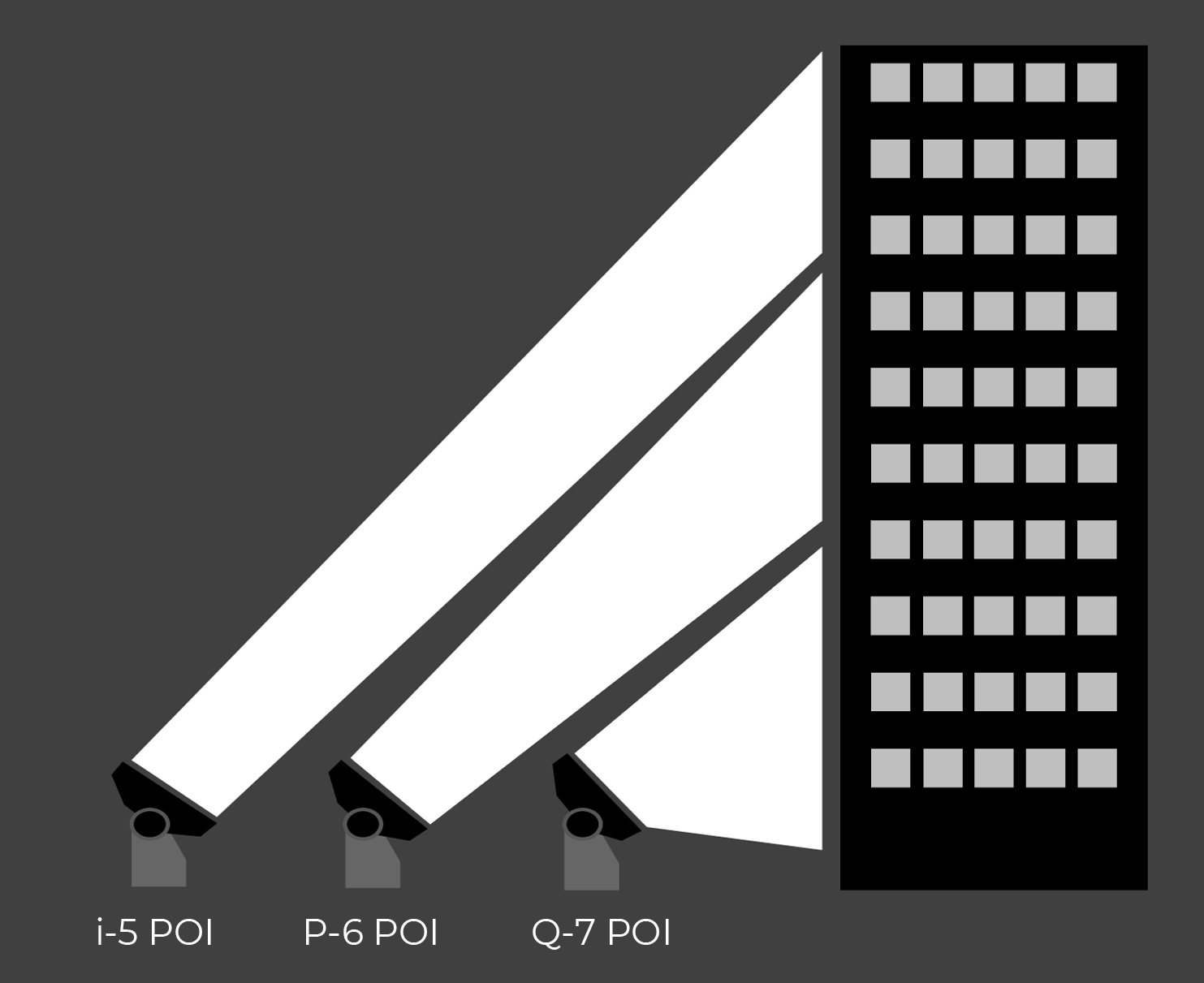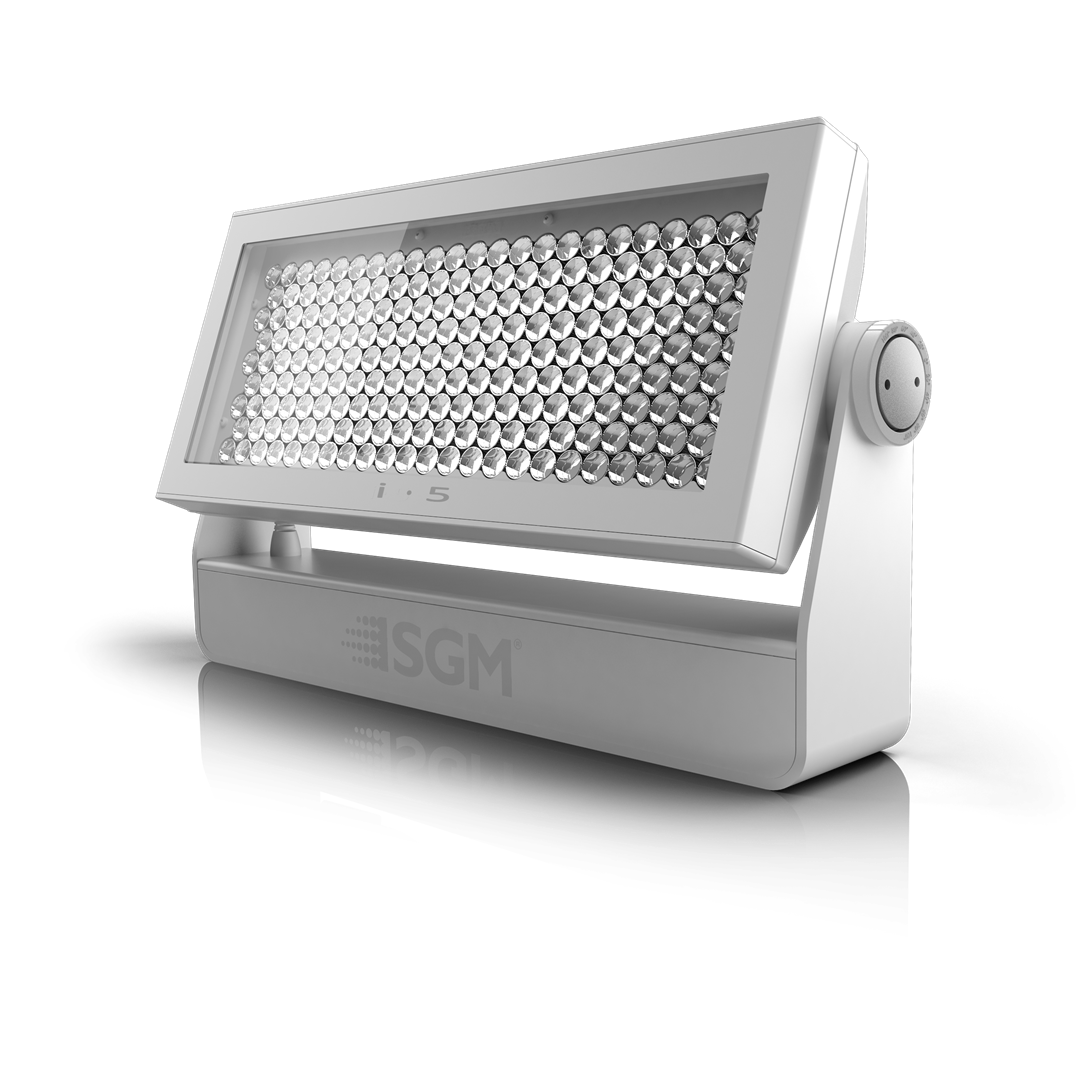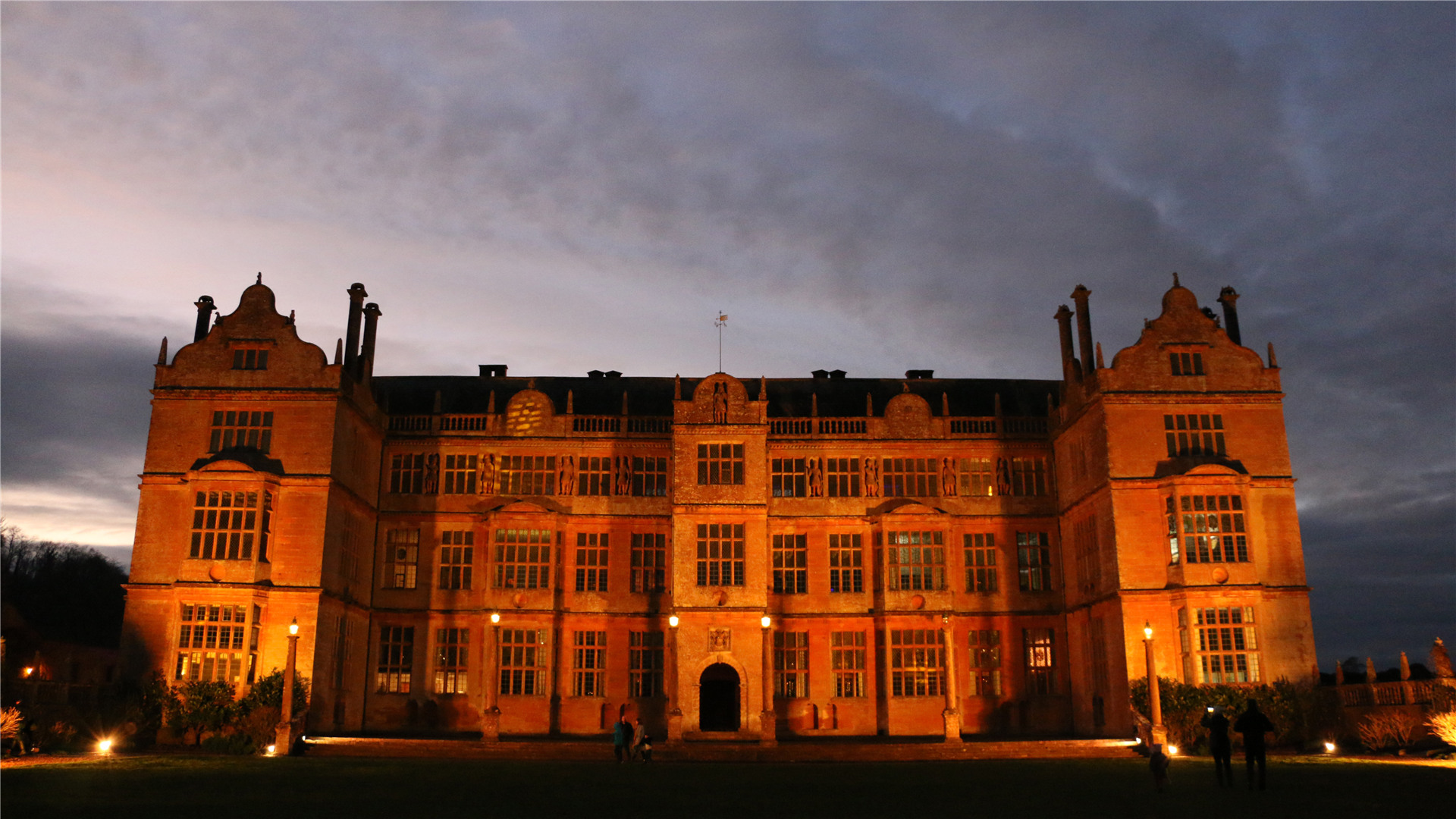The Permanent Outdoor Installation family of SGM architectural flood lights is specifically engineered to fulfill the needs of high-visibility facade lighting, enhancing the coverage and the output via highly efficient native lenses, while creating a package of luminaires to simplify the installation process. Luminaires that are capable of different optical performances while being similar in size, shape, and connectivity, are easier to specify and more suitable for building integration.
SGM I, P, and Q series offer a combination of narrow-to-wide beam angles to achieve the best throw and uniformity for the given distance, while ensuring color consistency, long-term reliability, and advanced control.












